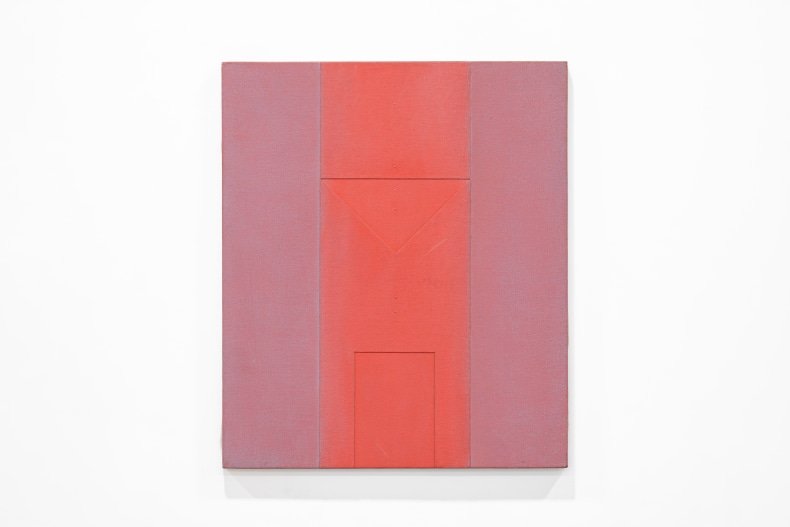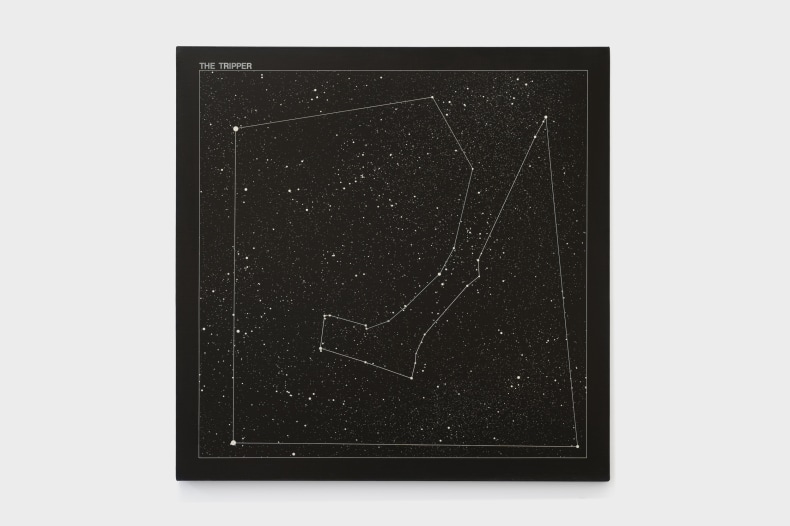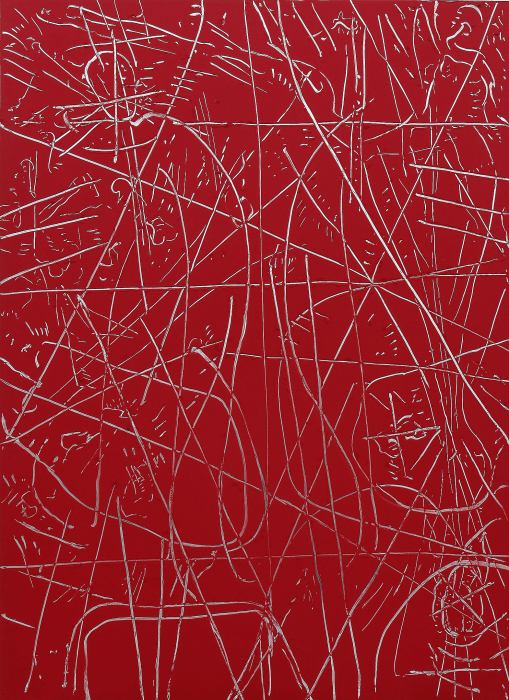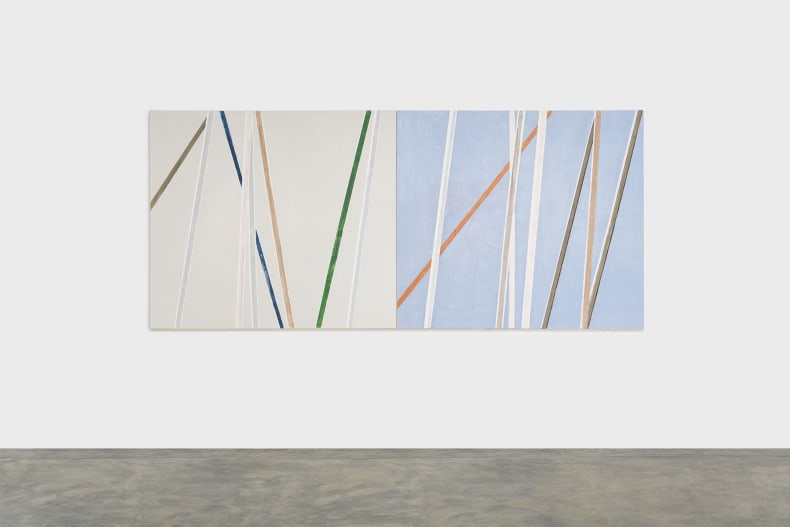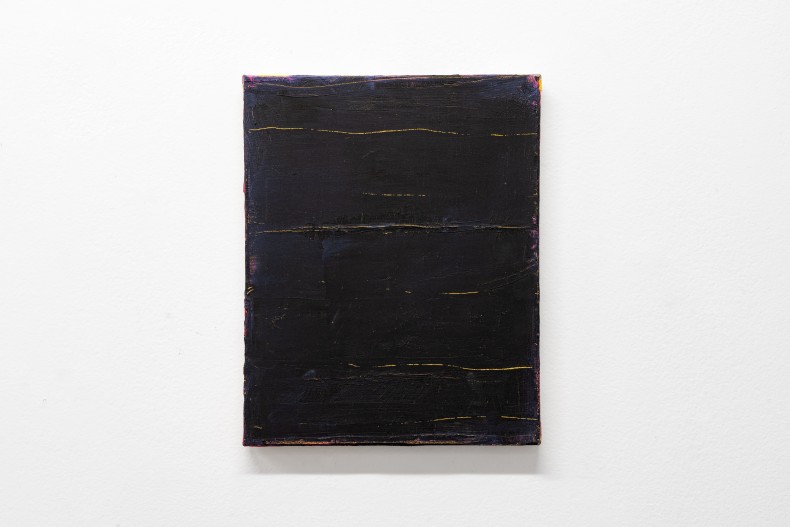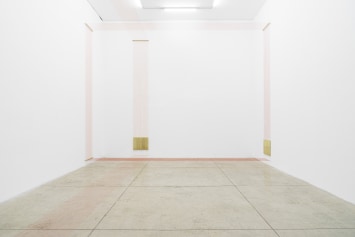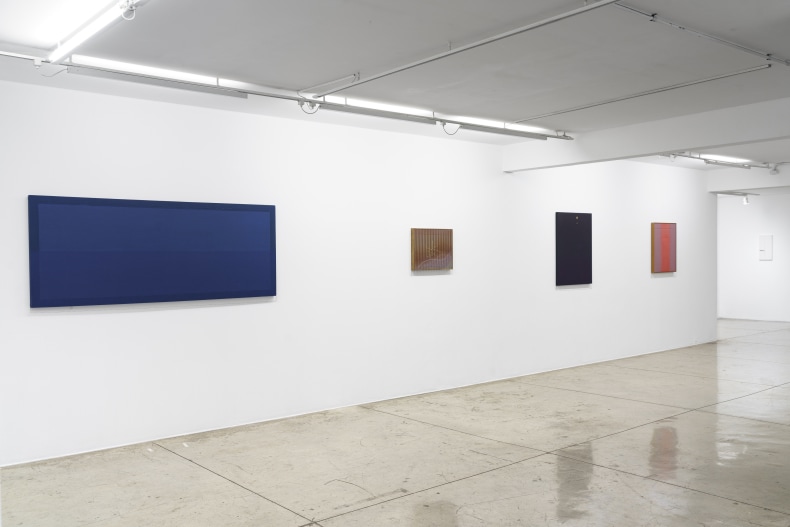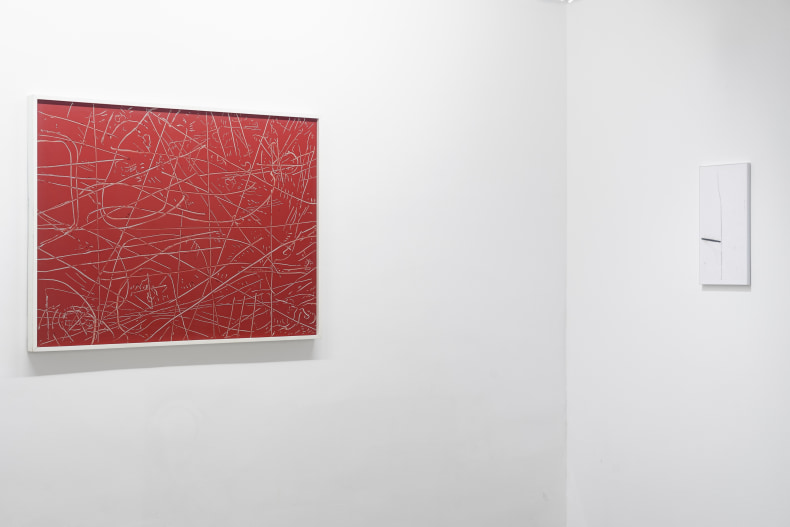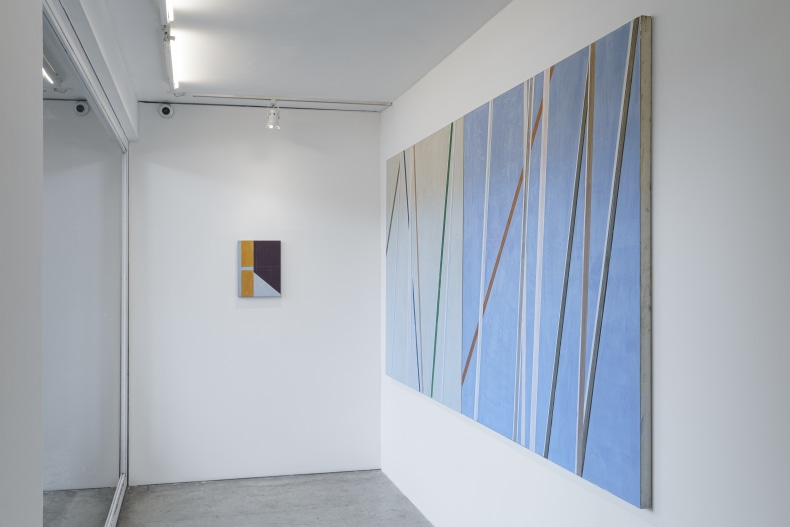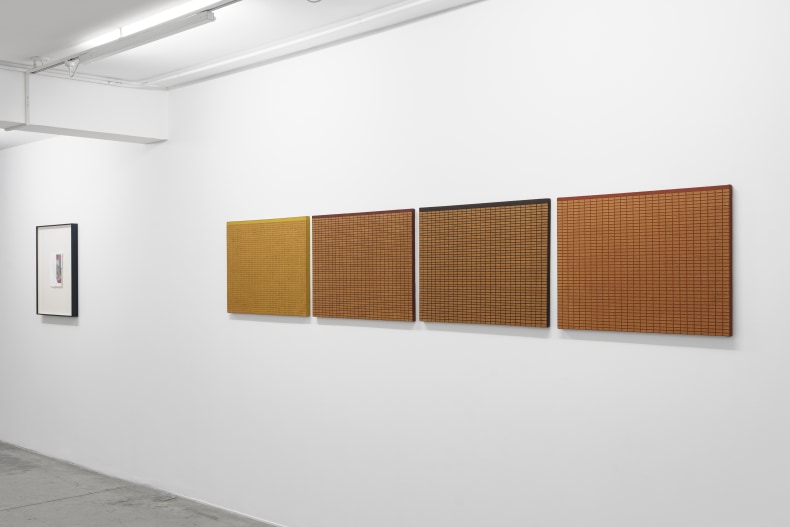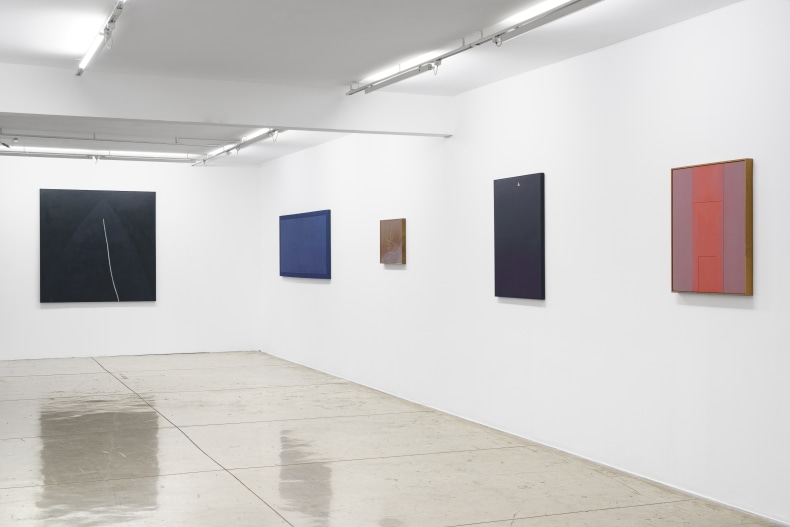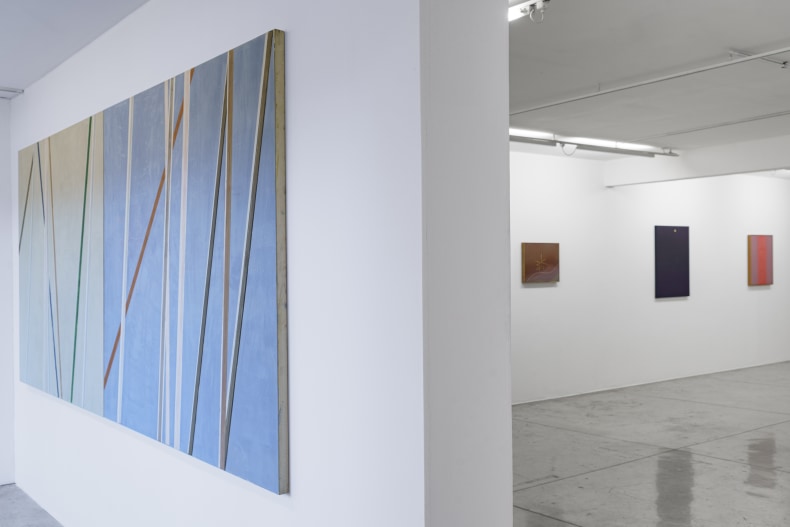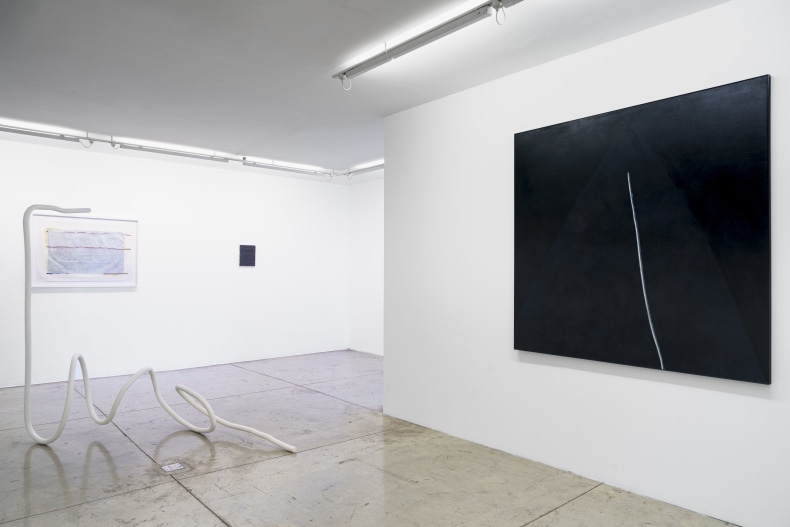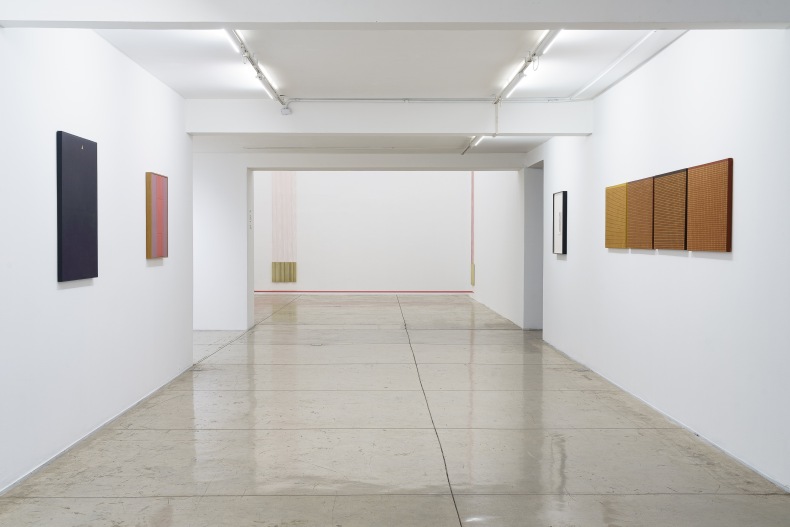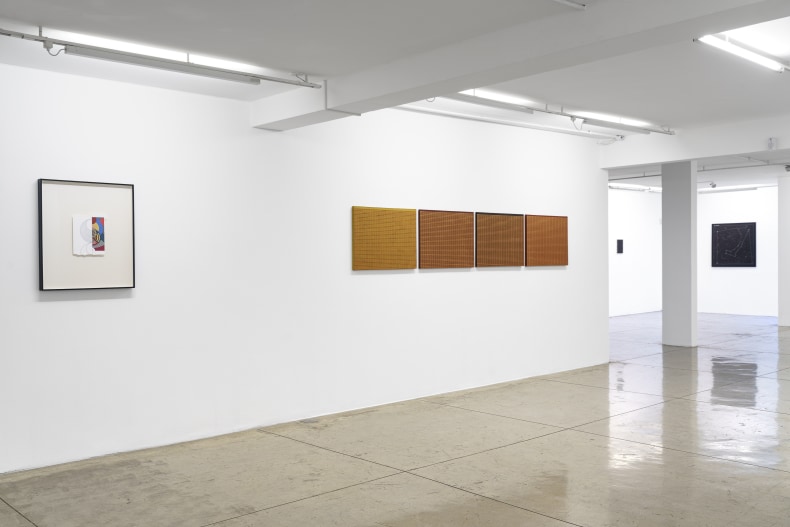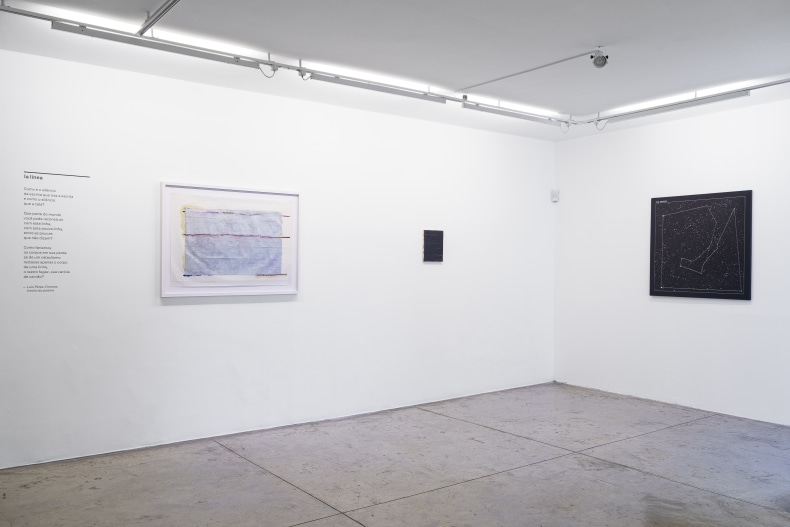Nara Roesler São Paulo is pleased to present Color Among Lines, curated by the Nara Roesler Curatorial Project in collaboration with Artur Lescher. This group exhibition features works by Antonio Dias, Carlito Carvalhosa, Sergio Sister, Tomie Ohtake, Milton Machado, Fabio Miguez, Abraham Palatnik, Jose Dávila,Amelia Toledo, Mira Schendel, and Lescher himself.
The exhibition starts with a previously unseen installation that Artur Lescher conceived specifically for the project, serving as a theoretical object to explore the dynamic relationship between color and line, their mutual interactions, and plastic tensions, as interpreted through various artists and mediums.
Abraham Palatnik, a foundational figure of kinetic art, investigated these elements to achieve dynamism and optical effects that engaged viewers in the composition, fostering a more active relationship between spectator and artwork. In Tomie Ohtake’s paintings, by contrast, the relationship between line and color unfolds in a tacit, meditative manner. Her works are characterized by broad chromatic areas, composed of subtle tonal variations, interrupted by absolute and sinuous lines. Amelia Toledo, in turn, perceives this relationship primarily through the horizon line, which she explores in landscapes that retain only essential elements, navigating the boundary between figuration and abstraction.
In Mira Schendel’s work, the line appears in a calligraphic form, particularly in her monotypes produced from the 1960s onward. Executed on rice paper, these works feature strokes, lines, and graphic marks that seem to float against the white background of the support, functioning simultaneously as the primary material of written communication and as independent visual signs.
The exhibition also includes works by Sérgio Sister, Fabio Miguez, and Carlito Carvalhosa, artists involved in the revival of painting through a contemporary lens from the 1980s onward. In Sister’s work, the interplay between line and color transcends the pictorial plane, delving into three-dimensionality, ultimately contributing to the concept of expanded painting. Carvalhosa, on the other hand, employs reflective aluminum sheets or mirrors as his supports, onto which he applies pictorial material, sometimes through broad areas of color. His gestures emerge in the lines inscribed on this material, revealing what lies "beneath" the color. In Miguez’s recent works, the relationship between line and color is directed toward projecting spatialities and architectures. He revisits paintings by Italian Renaissance masters, stripping the scenes of their characters and preserving only the spatial settings.
Furthermore, Milton Machado presents a series of canvases evoking the colors and forms of bricks. Titled Terras, these works feature a brown background and grids ranging in tones from red to black. The raw material he employs, however, consists of pulverized brick dust, referencing the material it seeks to evoke. Jose Dávila, whose main poetic interest lies in exploring tensions and balances resulting from the relationship between disparate materials, revisits the history of constructive art, seeking compositions formed by lines, planes, and colors. By placing excerpts of these referential works side by side, he emphasizes the sense of incompleteness generated by such compositions.
Artur Lescher, for his part, brings the exploration of the relationship between line and color into the sculptural realm, the primary focus of his practice, paying particular attention to its relationship with space.
